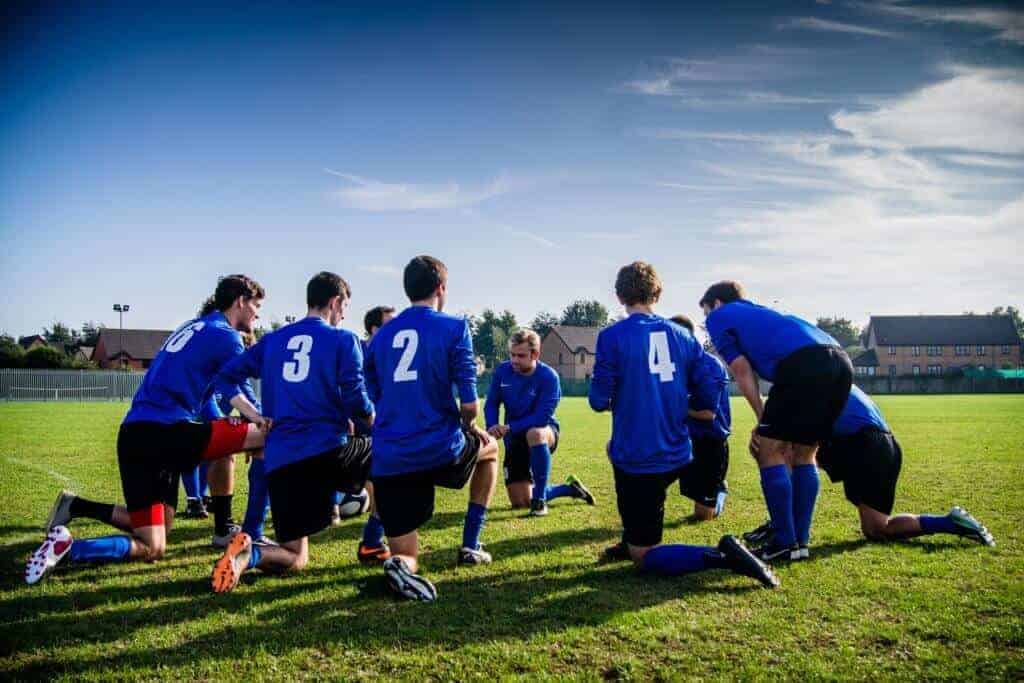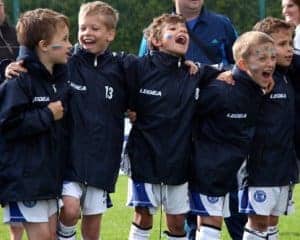
Introduction
Sport Education is a curriculum and instruction model designed for delivery within physical education. Modifications can be made to suit each age category, activity or setting. It is most effective with games based activities and with participants who have a good base level of competence.
It is intended to provide children and youth with more authentic and enjoyable sport experiences than what we typically see in traditional physical education lessons. This model was developed and introduced by Daryl Siedentop in 1984 and has since be adapted and successfully implemented across physical education programs nationally and internationally. Students participate as members of teams in seasons that are longer than the usual physical education unit (normally longer than six weeks). They take an active role in their own sport and physical activity experience by serving in varied and realistic roles that are evident in authentic sport settings such as captains, coaches, trainers, statisticians, officials, publicists, and members of a sports council. Teams develop camaraderie through team uniforms, names, and develop strong affiliations with their teams as they work together to learn and develop their skills and tactical play.
Goals
There are three major goals that guide program development in Sport Education. These serve as a guide to ensure students to become competent, literate, and enthusiastic players (Siedentop, 1994). This means that teachers must design learning experiences that facilitate students learning (not just supervised matches). According to Siedentop (1994);
- A competent player has sufficient skills to participate satisfactorily, can execute strategies that are appropriate for the complexity of the game being played, and is a knowledgeable player.
- A literate player understands and values the rules, rituals, and traditions of sport, and is able to distinguish between good and bad sport practices in a variety of sport settings.
- An enthusiastic player is one who preserves, protects, and enhances the sport culture through participation, involvement, and appropriate behaviour
Objectives
In order to achieve these goals, students need to develop a set of objectives which Siedentop (1994) has identified as the following ten items.
- Develop skills and fitness specific to particular sports.
- Appreciate and be able to execute strategic play in sports.
- Participate at a level appropriate to their stage of development.
- Share in the planning and administration of sport experiences.
- Provide responsible leadership.
- Work effectively within a group toward common goals.
- Appreciate the rituals and conventions that give particular sports their unique meanings.
- Develop the capacity to make reasoned decisions about sport issues.
- Develop and apply knowledge about umpiring, refereeing, and training.
- Decide voluntarily to become involved in after-school sport.
Features
What makes sport education unique and different from other types of physical activity and physical education instruction?
- Seasons
- The sport or physical activity is played in seasons
- Affiliation
- Students participate as members of a team
- Formal Competition
- A schedule of competition is built into a season amidst practice sessions
- Culminating Event
- Sport recognises individual and team performance through a concluding event
- Keeping Records
- Records of individual and team performance provide feedback to students and encourage goal setting for improvement
- Festivity
- Sport is exciting and meaningful to participants and should be reflected in a sport season
Seasons & Formal Competitions
In the sport education model sports are played in “seasons” rather than units. Using the term season makes the physical education experience more true to being part of an authentic sport season. Just as in authentic sport games are played throughout the season with a concluding culminating event.
Usually the first question students have when coming to physical education is, “Do we get to play today?” The idea of games throughout a season is appealing to students because it offers frequent opportunities to play. In a sport education season students participate as a team in skill practice and games; all building team unity. Using instructional models such as Game Sense or Teaching Games for Understanding (TGFU) can also be incorporated into a sport education season to allow a game form to be played every day. This game form allows teams to practice specific skills while being involved in team play at the same time.
Affiliation
A major part of the sport education model is the idea of students becoming members of a team. At the beginning of a sport season students are put in to teams with which they both practice and compete for the duration of the season. This close time spent together creates team pride and spirit. Team aspects of sport that are part of the sport education model add to this feeling of pride and the festivity that sport holds. There are many different ways in which team affiliation can be built during a season. The following are a few ideas of things that can be incorporated to give students a sense of belonging while building team spirit and affiliation:
· team names – countries, animals, food, etc.
· team posters, crests, banners, and flags
· team chants or cheers
· team uniforms
· team mascots
· team pictures
· individual team warm-ups; team practice courts
· team awards
Culminating Event
In most organised sports the season is ended by a culminating competition. Using culminating events in physical education helps build team affiliation. This aspect of festivity is sometimes lacking in the traditional physical education class. However, in sport education each season ends with a culminating event. This might be a three vs. three volleyball tournament, a round-robin, or a dance recital. Festivity is the emphasis in the culminating event. The culminating event is the climax of the season and should draw in all students to participate.
The festivity coordinator could be a role that you would place in charge of making the culminating event festive. Some of his/her responsibilities might include:
· Creating awards for the end of the event (most improved, MVP, best sportsperson)
· Creating a bracket poster
· Creating team posters
· Using old trophies to recreate awards with team pictures on them
· Display records or statistics on a display board
· Write and publish a season newsletter
Keeping Records
In most sports numerous records are kept throughout the season. Records of both individual and team performance are kept in order to provide feedback to players and add to the tradition of sport. This same aspect of sport is transferred in to the physical education setting through the sport education model. Records provide feedback for students and teams and encourage goal setting for improvement. The roles and responsibilities that are set up through the model allow for easy opportunities to incorporate the keeping of records during practice and games if individual and team performance. For instance, statistics can be taken by a teams statistician and can even be taught by the statistician to the rest of his or her teammates. Records, such as the statistician’s statistics, could also be used by a coach to design a practice specifically addressing a team’s needs. Publicists may also use stats and other team information to create articles, newsletters, or awards.


[…] Sport Education Explained […]
[…] a sport and educational science, the philosophy of sport education serves as a theoretical framework for developing the theoretical foundations for sport instruction. […]
[…] Inadequate financial support from the government hampers the development of sports education. […]
[…] consist of four courses, totaling 12 credit hours, and cover a range of topics related to sport education. What sets these programs apart is that there are no overlapping courses, allowing students to […]